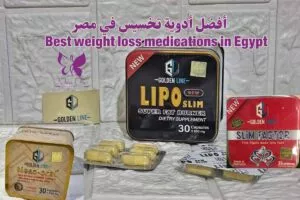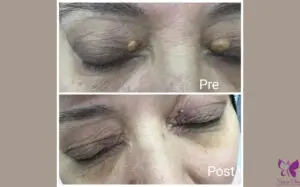Children's skin conditions are caused by their sensitive skin, and skin disorders vary greatly in symptoms and severity.
Most of these disorders are minor, but others can indicate a more serious problem.
So in this article, we will learn about many of these diseases, and how to prevent them.
Dermatologists at the Freshness Center for Dermatology, Cosmetic and Laser in Hurghada recommend that you protect your child's skin by following some instructions and tips.
What are children's skin diseases?
Children's skin conditions occur from birth through adolescence, including:
- Diaper dermatitis.
- Atopic dermatitis (eczema).
- warts;
- ringworm;
- Fifth disease.
- Smallpox.
- herpes;
- Coxsackie disease.
- Scarlet fever.
- Sixth disease.
What is diaper dermatitis?
Also known as rash, it is not a disease, but it is a category of skin diseases that affect the diaper area, and there are 4 types of them, including the following:
- Irritant contact dermatitis.
- increased growth of fungi;
- Allergic contact dermatitis.
- seborrheic dermatitis;
First: irritant contact dermatitis
It is associated with skin exposure to either urine, feces, or both, the most common type.
This type of infection appears as red, sometimes swollen, or even pimple-like patches in the diaper area.
This prolonged inflammation can increase the risk of infection in the affected area.
Basic treatment and prevention includes frequent diaper changes, to prevent contact with moisturizing creams that contain zinc oxide.
A mild topical steroid cream also reduces inflammation more quickly.
You can also read : Skin cancer and methods of detection.
Second, the growth of fungi
A wet diaper environment causes an overgrowth of fungi, often with Candida albicans.
This condition progresses to red bumps and spots, and sometimes pus bumps on the skin.
This condition can be treated with a topical antifungal cream such as clotrimazole.
Third: Allergic contact dermatitis
Symptoms include redness and swelling accompanied by itching that keeps recurring in the same area, but this condition rarely occurs.
It is related to one of the components of the diaper itself, such as: the adhesive, the perfume, or the preservatives in the baby wipes.
Fourth: seborrheic dermatitis
It is known as cradle cap in infants, and dandruff in older children and adults.
This condition can also affect other areas of the body such as the face and neck, as well as skin folds.
Hydrocortisone 1 to 2.5 % is used to treat the affected areas only twice daily for no more than two weeks each time.
What is atopic dermatitis?
This inflammation is called eczema, and it is a children's skin disease that often occurs in childhood, and may continue to the age of two years.
It is considered a chronic condition, meaning that it can only be treated by referring to a specialized dermatologist, as at the Freshness Center for Dermatology and Aesthetics in Hurghada.
This condition is more common in families with a history of seasonal allergies and asthma.
It can get worse when skin comes into contact with irritants such as saliva, and friction, especially when a baby starts to crawl, also contributes to its appearance.
Symptoms include:
- The appearance of dry patches on the skin.
- A rash on the cheeks often begins at 2 to 6 months of age.
Symptoms can worsen when the child scratches the site of the injury, and the openings in the skin become infected.
Skin care using appropriate soaps and moisturizing creams is the best solution for treatment, as it contains ceramides that reduce itching and inflammation.
What are warts?
This type of pediatric skin disease is caused by infection with the human papillomavirus (HPV), and is common at all ages.
Warts (pimples) appear as hard bumps on the fingers, hands and feet.
It usually spreads through direct contact, and there are no antiviral treatments that target the virus itself.
But it can be treated with medicines containing salicylic acid, which soften normal skin cells.
A higher percentage of acid (20 to 40 %) is most effective.
Treatment depends on the child's age, the number and location of the warts.
Treatment options offered by a dermatologist at Nadhara Beauty and Laser Center in Hurghada include:
- Oral cimetidine to boost the immune system (2 to 3 months).
- Scrape the blisters.
- The use of some chemicals such as trichloroacetic acid.
Treatments need to be repeated every 3 to 4 weeks until they are completely gone.
You can also read : Acacia leather.
ringworm
It appears as a result of infection with a type of fungus known as Ringworm that live on dead skin, hair, and nail tissue.
It begins as a red, scaly patch or bump that spreads by contact with the skin of an infected person or animal. It can also be infected by sharing objects such as towels.
Treat with antifungal creams.
Fifth disease
It usually begins within two weeks, as a result of infection with parvovirus B19, with flu-like symptoms, followed by a rash.
It is spread by coughing and sneezing, and is most contagious in the week before the rash appears.
Treat with rest and pain relievers prescribed by the doctor.
Chickenpox
It is known as a common children's skin disease since ancient times, but it disappeared thanks to the chicken pox vaccine.
The disease is highly contagious, spreads easily, and leaves itchy, blisters all over the body.
shingles
It appears as a result of infection with some types of bacteria (streptococcus) that cause sores or pustules, especially around the mouth and nose.
The crust that forms can crack and mature into a yellow-brown crust, and scratching causes it to spread to other parts of the body.
Hand, Foot, and Mouth Disease (Coxsackie)
This disease begins with a fever, followed by painful sores in the mouth, and then the appearance of an itchy rash.
The rash appears on the hands, feet, and sometimes the buttocks and legs.
It is spread by coughing, sneezing, and diaper use, so it is not dangerous and goes away on its own within about a week.
scarlet fever
It is a sore throat accompanied by a rash, and symptoms include sore throat, andfever, Abdominal pain, and swollen glands in the neck.
The rash begins after a day or two and goes away after about 7-14 days.
Scarlet fever is very contagious, so wash your hands well to prevent spreading it.
Sixth disease (Rosula)
The sixth disease of the skin of children at the age of 6 months to 2 years, so it is given this name.
It begins with cold symptoms, followed by a high temperature, followed by a rash of small, pinkish bumps that may be flat or slightly raised from the skin.
These bumps appear first on the chest and back, then the hands and feet.
Finally, do not hesitate, my dear, to consult a dermatologist who specializes in treating children’s skin diseases at the Freshness Center for Dermatology, Cosmetics and Laser.
Your child may have a mild illness that can be easily treated, or he may need some interventions such as:
- Freezing with liquid nitrogen (cryotherapy).
- Laser treatment.






